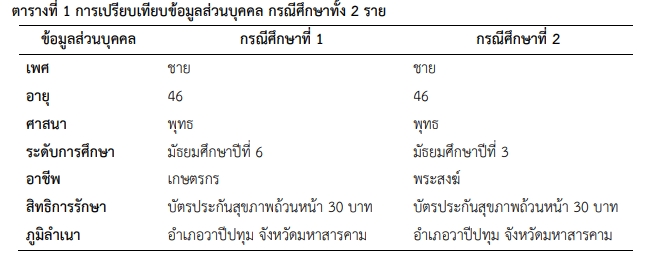Nursing care of patients Acetabulum fracture with surgery combined with General Anesthesia :Two case studies
Keywords:
Nursing care of patients with hip socket fractures, receiving general anesthesia, hip socket fracturesAbstract
Background: Hip Fracture is one of the incidences that is increasing as the population ages. Most of the time the causes of Hip Fractures are falls which are the leading cause of hospital admissions. Also, the death rate is highest in the first 6 months after a hip fracture and leads to quality of life being worse. Therefore, a variety of surgical treatments, and having basic knowledge and planning the correct anesthesia proper and timely treatment is important to help ensure patient safety. Also, it will Reduce complications and be able to recover faster after surgery.
Objective: To study nursing care for patients with Hip Fractures treated with surgery combined with general anesthesia: 2 case studies.
Method: Comparison of the nursing care given to two patients with general anesthesia and surgery to heal their hip socket fractures who had undergone surgery and received anesthesia In the anesthesia nursing work group at Maha Sarakham Hospital By collected information from inpatient medical records. Patient interviews and observations data analysis comparative analysis Symptoms and signs, treatment, nursing notes using the concept of evaluating patients according to Gordon's 11 health models.
Results: A comparison of nursing care for 2 patients with hip socket fractures treated with surgery combined with general anesthesia found that:
Case 1: A Thai man, age 46, had an accident and was electrocuted by high voltage had fell from a 5-meter-high tree, and did not faint; he could remember the incident, and he had a shock wound on his left leg, pain in his left hip, and his left leg was deformed. The diagnosis was MHI (Moderate risk) with Electrical injury with CFX Acetabulum left hip and was treated with surgery along with general anesthesia.
Case 2: A 46-year-old Thai man had an accident when a pickup truck crashed into a sedan on the side of the road. He was unconscious and could not remember the incident.
Not all, left shoulder and thigh pain. Very painful, difficult to move There was a bruise on the shoulder. Moreover, He has a congenital disease which is high blood pressure and high blood fat. The diagnosis of MHI (Moderate risk) with CFX left Acetabulum with CFX left Proximal humerus. Treated with surgery along with general anesthesia.
Both case studies had signs and symptoms of a hip socket fracture. There is pain and swelling in the hip area. Hip pain, unable to move, and They had deformed legs. also when following up on nursing results, it was found that there are complications from the rapid loss of a large amount of blood and fluid.
Summarize: There are different details and congenital diseases in nursing care of patients with hip socket fractures treated with surgery combined with general anesthesia. Anesthetists play an important role in providing appropriate anesthesia for each patient. Including taking care of providing appropriate nursing care before, during, and after receiving anesthesia which will help keep the surgery safe. Empirical evidence should be used as nursing practice guidelines for the care of this group of patients. To effectively reduce the chance of life-threatening complications.






